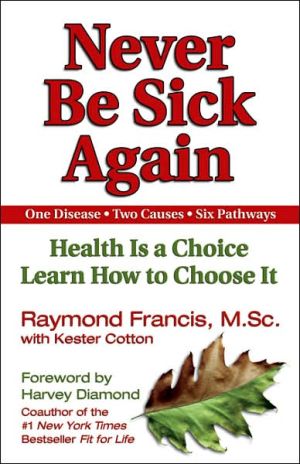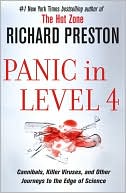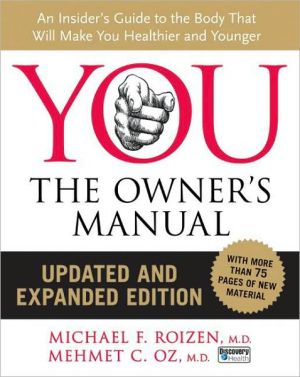Gift of Therapy: An Open Letter to a New Generation of Therapists and Their Patients
The culmination of master psychiatrist Dr. Irvin D. Yalom's more than thirty-five years in clinical practice, The Gift of Therapy is a remarkable and essential guidebook that illustrates through real case studies how patients and therapists alike can get the most out of therapy. The bestselling author of Love's Executioner shares his uniquely fresh approach and the valuable insights he has gained—presented as eighty-five personal and provocative "tips for beginner therapists," including:\ \...
Search in google:
Anyone interested in psychotherapy or personal growth will rejoice at The Gift of Therapy, a masterwork from one of the most accomplished psychological thinkers of our day. As an award-winning author of both nonfiction and fiction, and a psychiatrist in practice for 35 years, Yalom imparts his unique wisdom in this remarkable guidebook for successful therapy.At once startlingly profound and irresistibly practical, Yalom's insights—let the patient matter to you; create a n ew kind of therapy for each patient; how and how not to use self-disclosure—will help enrich the therapeutic process for both patient and counselor. Publishers Weekly If the future of psychotherapy lies in psychopharmaceuticals and the short-term therapies stipulated by HMOs, argues Yalom, then the profession is in trouble. Yalom, the recipient of both major awards given by the American Psychiatric Association, professor emeritus of psychiatry at Stanford and the author of both fiction and nonfiction volumes about psychotherapy, writes this book in response to that crisis. Based on knowledge gained from his 35 years of practice, the resulting book of tips (a "gift" for the next generation of therapists) is an enlightening refutation of "brief, superficial, and insubstantial" forms of therapy. Yalom, who references Rilke and Nietzsche as well as Freud's protege Karen Horney and the founder of client-centered therapy, Carl Rogers, describes therapy as "a genuine encounter with another person." He suggests that therapists avoid making DSM IV diagnoses (except for insurance purposes), since these "threaten the human, the spontaneous, the creative and uncertain nature of the therapeutic venture." He also encourages psychotherapists to use dream analysis, group therapy and, when appropriate, wholly inventive forms of treatment. Traditionalists will probably squirm at some of his suggestions (particularly "Revealing the Therapist's Personal Life" and "Don't Be Afraid of Touching Your Patient"). Other tips, though, such as "Never Be Sexual with Patients" are no-brainers. Although the book dies somewhat in the second half, and not much here is new, the wise ideas are perfectly accessible. (Jan.) Forecast: Yalom has explored many of these ideas before. His followers will certainly be charmed, and newcomers patients as much as therapists may be won over by his openness and tender tone. Copyright 2001 Cahners Business Information.
Chapter One\ \ \ Remove the Obstacles to Growth\ \ \ When I was finding my way as a young psychotherapy student, the most useful book I read was Karen Horney's Neurosis and Human Growth. And the single most useful concept in that book was the notion that the human being has an inbuilt propensity toward self-realization. If obstacles are removed, Horney believed, the individual will develop into a mature, fully realized adult, just as an acorn will develop into an oak tree.\ "Just as an acorn develops into an oak..." What a wonderfully liberating and clarifying image! It forever changed my approach to psychotherapy by offering me a new vision of my work: My task was to remove obstacles blocking my patient's path. I did not have to do the entire job; I did not have to inspirit the patient with the desire to grow, with curiosity, will, zest for life, caring, loyalty, or any of the myriad of characteristics that make us fully human. No, what I had to do was to identify and remove obstacles. The rest would follow automatically, fueled by the self-actualizing forces within the patient.\ I remember a young widow with, as she put it, a "failed heart" -- an inability ever to love again. It felt daunting to address the inability to love. I didn't know how to do that. But dedicating myself to identifying and uprooting her many blocks to loving? I could do that.\ I soon learned that love felt treasonous to her. To love another was to betray her dead husband; it felt to her like pounding the final nails in her husband's coffin. To love another asdeeply as she did her husband (and she would settle for nothing less) meant that her love for her husband had been in some way insufficient or flawed. To love another would be self-destructive because loss, and the searing pain of loss, was inevitable. To love again felt irresponsible: she was evil and jinxed, and her kiss was the kiss of death.\ We worked hard for many months to identify all these obstacles to her loving another man. For months we wrestled with each irrational obstacle in turn. But once that was done, the patient's internal processes took over: she met a man, she fell in love, she married again. I didn't have to teach her to search, to give, to cherish, to love -- I wouldn't have known how to do that.\ A few words about Karen Horney: Her name is unfamiliar to most young therapists. Because the shelf life of eminent theorists in our field has grown so short, I shall, from time to time, lapse into reminiscence -- not merely for the sake of paying homage but to emphasize the point that our field has a long history of remarkably able contributors who have laid deep foundations for our therapy work today.\ One uniquely American addition to psychodynamic theory is embodied in the "neo- Freudian" movement -- a group of clinicians and theorists who reacted against Freud's original focus on drive theory, that is, the notion that the developing individual is largely controlled by the unfolding and expression of inbuilt drives.\ Instead, the neo-Freudians emphasized that we consider the vast influence of the interpersonal environment that envelops the individual and that, throughout life, shapes character structure. The best-known interpersonal theorists, Harry Stack Sullivan, Erich Fromm, and Karen Horney, have been so deeply integrated and assimilated into our therapy language and practice that we are all, without knowing it, neo-Freudians. One is reminded of Monsieur Jourdain in Molière's Le Bourgeois Gentilhomme, who, upon learning the definition of "prose," exclaims with wonderment, "To think that all my life I've been speaking prose without knowing it."\ The Gift of Therapy. Copyright © by Irvin Yalom. Reprinted by permission of HarperCollins Publishers, Inc. All rights reserved. Available now wherever books are sold.
IntroductionAcknowledgmentsCh. 1Remove the Obstacles to Growth1Ch. 2Avoid Diagnosis (Except for Insurance Companies)4Ch. 3Therapist and Patient as "Fellow Travelers,"6Ch. 4Engage the Patient11Ch. 5Be Supportive13Ch. 6Empathy: Looking Out the Patient's Window17Ch. 7Teach Empathy23Ch. 8Let the Patient Matter to You26Ch. 9Acknowledge Your Errors30Ch. 10Create a New Therapy for Each Patient33Ch. 11The Therapeutic Act, Not the Therapeutic Word37Ch. 12Engage in Personal Therapy40Ch. 13The Therapist Has Many Patients; The Patient, One Therapist44Ch. 14The Here-and-Now - Use It, Use It, Use It46Ch. 15Why Use the Here-and-Now?47Ch. 16Using the Here-and-Now - Grow Rabbit Ears49Ch. 17Search for Here-and-Now Equivalents52Ch. 18Working Through Issues in the Here-and-Now58Ch. 19The Here-and-Now Energizes Therapy62Ch. 20Use Your Own Feelings as Data65Ch. 21Frame Here-and-Now Comments Carefully68Ch. 22All Is Grist for the Here-and-Now Mill70Ch. 23Check into the Here-and-Now Each Hour72Ch. 24What Lies Have You Told Me?74Ch. 25Blank Screen? Forget It! Be Real75Ch. 26Three Kinds of Therapist Self-Disclosure83Ch. 27The Mechanism of Therapy - Be Transparent84Ch. 28Revealing Here-and-Now Feelings - Use Discretion87Ch. 29Revealing the Therapist's Personal Life - Use Caution90Ch. 30Revealing Your Personal Life - Caveats94Ch. 31Therapist Transparency and Universality97Ch. 32Patients Will Resist Your Disclosure99Ch. 33Avoid the Crooked Cure102Ch. 34On Taking Patients Further Than You Have Gone104Ch. 35On Being Helped by Your Patient106Ch. 36Encourage Patient Self-Disclosure109Ch. 37Feedback in Psychotherapy112Ch. 38Provide Feedback Effectively and Gently115Ch. 39Increase Receptiveness to Feedback by Using "Parts,"119Ch. 40Feedback: Strike When the Iron Is Cold121Ch. 41Talk About Death124Ch. 42Death and Life Enhancement126Ch. 43How to Talk About Death129Ch. 44Talk About Life Meaning133Ch. 45Freedom137Ch. 46Helping Patients Assume Responsibility139Ch. 47Never (Almost Never) Make Decisions for the Patient142Ch. 48Decisions: A Via Regia into Existential Bedrock146Ch. 49Focus on Resistance to Decision148Ch. 50Facilitating Awareness by Advice Giving150Ch. 51Facilitating Decisions - Other Devices155Ch. 52Conduct Therapy as a Continuous Session158Ch. 53Take Notes of Each Session160Ch. 54Encourage Self-Monitoring162Ch. 55When Your Patient Weeps164Ch. 56Give Yourself Time Between Patients166Ch. 57Express Your Dilemmas Openly168Ch. 58Do Home Visits171Ch. 59Don't Take Explanation Too Seriously174Ch. 60Therapy-Accelerating Devices179Ch. 61Therapy as a Dress Rehearsal for Life182Ch. 62Use the Initial Complaint as Leverage184Ch. 63Don't Be Afraid of Touching Your Patient187Ch. 64Never Be Sexual with Patients191Ch. 65Look for Anniversary and Life-Stage Issues195Ch. 66Never Ignore "Therapy Anxiety,"197Ch. 67Doctor, Take Away My Anxiety200Ch. 68On Being Love's Executioner201Ch. 69Taking a History206Ch. 70A History of the Patient's Daily Schedule208Ch. 71How Is the Patient's Life Peopled?210Ch. 72Interview the Significant Other211Ch. 73Explore Previous Therapy213Ch. 74Sharing the Shade of the Shadow215Ch. 75Freud Was Not Always Wrong217Ch. 76CBT Is Not What It's Cracked Up to Be ... Or, Don't Be Afraid of the EVT Boogeyman222Ch. 77Dreams - Use Them, Use Them, Use Them225Ch. 78Full Interpretation of a Dream? Forget It!227Ch. 79Use Dreams Pragmatically: Pillage and Loot228Ch. 80Master Some Dream Navigational Skills235Ch. 81Learn About the Patients's Life from Dreams238Ch. 82Pay Attention to the First Dream243Ch. 83Attend Carefully to Dreams About the Therapist246Ch. 84Beware the Occupational Hazards251Ch. 85Cherish the Occupational Privileges256Notes261
\ From Barnes & NobleAn unorthodox thinker and professor emeritus of psychiatry at Stanford University, Irvin D. Yalom, M.D., reflects upon the practical, philosophical, and emotional dynamics of therapy through the lenses of both patient and therapist. This thought-provoking collection of essays covers topics that include self-disclosure, occupational privileges and hazards of the therapist, dream interpretation, talking about death, and the existential components of therapy. Described by the author as "a nuts-and-bolts collection of [my] favorite interventions or statements," The Gift of Therapy is a welcome and well-deserved addition to the library of anyone seeking excellence and a deeper understanding of the therapeutic process.\ \ \ \ \ Boston Globe"An absorbing guide"\ \ \ Boston Globe“An absorbing guide”\ \ \ \ \ Publishers WeeklyIf the future of psychotherapy lies in psychopharmaceuticals and the short-term therapies stipulated by HMOs, argues Yalom, then the profession is in trouble. Yalom, the recipient of both major awards given by the American Psychiatric Association, professor emeritus of psychiatry at Stanford and the author of both fiction and nonfiction volumes about psychotherapy, writes this book in response to that crisis. Based on knowledge gained from his 35 years of practice, the resulting book of tips (a "gift" for the next generation of therapists) is an enlightening refutation of "brief, superficial, and insubstantial" forms of therapy. Yalom, who references Rilke and Nietzsche as well as Freud's protege Karen Horney and the founder of client-centered therapy, Carl Rogers, describes therapy as "a genuine encounter with another person." He suggests that therapists avoid making DSM IV diagnoses (except for insurance purposes), since these "threaten the human, the spontaneous, the creative and uncertain nature of the therapeutic venture." He also encourages psychotherapists to use dream analysis, group therapy and, when appropriate, wholly inventive forms of treatment. Traditionalists will probably squirm at some of his suggestions (particularly "Revealing the Therapist's Personal Life" and "Don't Be Afraid of Touching Your Patient"). Other tips, though, such as "Never Be Sexual with Patients" are no-brainers. Although the book dies somewhat in the second half, and not much here is new, the wise ideas are perfectly accessible. (Jan.) Forecast: Yalom has explored many of these ideas before. His followers will certainly be charmed, and newcomers patients as much as therapists may be won over by his openness and tender tone. Copyright 2001 Cahners Business Information.\ \ \ \ \ Library JournalThese two books defend the professional treatment of psychological problems by listening and responding in the Freudian manner, and they deplore the current dominance of neuroscience, pharmacology, and behaviorism. In Why Psychoanalysis?, French psychoanalyst, historian, and critic Roudinesco refers to our "depressive society" and our loss of subjectivity in the era of individuality. She fiercely defends Freud against "fanatical" opponents, even claiming that he was not antifeminist. Roudinesco will appeal to scholars of Freud and Jacques Lacan, of whom some knowledge is assumed. Unfortunately, though Roudinesco wants psychoanalysis to be a science, she often waxes polemical when a clear, objective evaluation of Freud is needed. For that, a general audience will be better served by Elio Frattaroli's Healing the Soul in the Age of the Brain (LJ 8/01). For a more readable presentation of the cultural nexus of psychiatry, Julian Leff's The Unbalanced Mind (LJ 11/15/01) is outstanding. In The Gift of Therapy, Yalom (psychiatry, emeritus, Stanford) writes for both the professional and the lay reader a good idea, since educated consumers help bring professionals into the real world. He favors some self-disclosure by therapists, home visits, meeting with significant others, nonsexual touching, and time for reflection on each session. In 85 short chapters, he presents little pearls of ideas shaped from 35 years in practice. Yalom's view that the therapist is also healed in the process reminds this reviewer of James P. Carse's philosophy. Yalom's latest is essential for therapy trainers and fine for general libraries with psychology and self-help collections. For a general selection of this respected psychiatrist's earlier work, including fiction, consider The Yalom Reader (Basic Bks: Perseus, 1998). E. James Lieberman, George Washington Univ. Sch. of Medicine, Washington, DC Copyright 2001 Cahners Business Information.\ \ \ \ \ From The CriticsHaving reached his 70th year, Yalom (psychiatry, Stanford U.) worries about where the next generation of effective psychotherapists will be trained, noting that the big medical corporations are primarily interested in pushing medicine. He advises students against sectarianism and suggests a therapeutic pluralism in which effective interventions are drawn from several different therapy approaches. He does not include an index. Annotation c. Book News, Inc., Portland, OR (booknews.com)\ \







